About This Book
Volume 3 of four bound volumes by the artist Asai Chū (1856-1907) forming a pictorial account of the battles of Japan's Second Army on China's Liaodong Peninsula during the first Sino-Japanese War (1894-1895).Asai's sketches, created at the battle front, were done with pencil and pen and then highlighted with watercolors1. They were then reproduced using full-color lithography by the publisher Shinyōdō, who included five or six color plates in each volume accompanied by a table of contents and a preface written by Asai. It is likely that the text and cover were printed by woodblock. While woodblock printing was the predominant printing method for artists' renderings of the war, both lithography and photography were making great inroads in replacing woodblock methods, being seen as more technologically modern and providing for greater realism.
Asai's Work at the Front
Along with Kubota Beisen (1852-1906), Yamamoto Hōsui, Koyama Shōtarō [1857-1916] Kuroda Seiki (1866-1924) and a handful of other artists, Asai traveled to China to create images of the war from the front, rather than from the comfort of Tokyo, where almost all of the woodblock senso-e (war prints) were created. He traveled as a correspondent for the Japanese newspaper Jiji shipō2 and, as all correspondents and artists allowed to go to front, he came under the direct supervision and censorship of the military.3
He was assigned to the Second Army during their invasion of the Liaodong peninsula and subsequent capturing of Port Arthur.
Upon his dispatch, Asai, extremely supportive of his nation's war efforts, as were all the war reporters and artists, stated his mission as to "depict the real situation in the army and...paint what words do not well attain so as to compensate for the deficiencies in historical records for later times."4
While using Western-style artistic devices to bring great realism to his sketches, his work "provided almost idyllic views of the soldiers..."5
After returning to Japan in 1895, Asai painted a number of war-themed works including Search after the Battle of Port Arthur and Captain Higuchi Rescuing a Child, both pictured below.
| Displayed the following year at the Fourth Domestic Industrial Exposition and the Seventh Exhibition of the Meiji Art Association (Meiji Bijustsukai), the composition [Search after the Battle of Port Arthur, shown on the right] shows Japanese soldiers making their way past a fallen Chinese man - now a grim reminder of the reported Japanese atrocities against Chinese civilians. Another, similarly colored oil painting [Captain Higuchi Rescuing a Child] dating from 1895 documents the return by Captain Higuchi, the commander of the Sixth Brigade and one of Japan's war heroes, of a Chinese child whom he had rescued from the battlefield at Motianling.6 |
Source: "Asai Chū and Ikebe Yoshikata: A Unique Collaboration", Donald Jenkins, appearing in Impressions: The Journal of the Japanese Art Society of America, Number 39, p. 35-65.
In August 1894, not quite a year after Asai's marriage and a month before the Meiji Art Society's sixth annual exhibition, war broke out between China and Japan. Asai and several of his friends sought permission to accompany some army units being dispatched to battle, as war correspondents do today, and they arranged with several newspapers to furnish pictures of what they witnessed (fig. 5). Japanese forces quickly took the lead, virtually annihilating the Chinese navy, and the war ended little over eight months later, in 1895. Their swift victory caught the world by surprise.
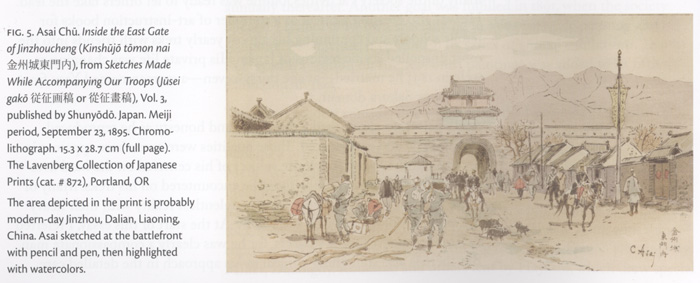
1 A Much Recorded War: The Russo-Japanese War inHistory and Imagery, Fredrick A. Sharf, Anne NishimuraMorse, Sebastian Dobson, MFA Publications, 2005, p. 39.
2 Inexorable Modernity: Japan's Grappling With Modernity in the Arts, Hiroshi Nara, Lexington Books, 2007, p. 81-82.
3 Op. cit. A Much Recorded War.
4 Ibid., p. 38.
5 Ibid.
6 Ibid., p. 39.
Book Page Details
2 Inexorable Modernity: Japan's Grappling With Modernity in the Arts, Hiroshi Nara, Lexington Books, 2007, p. 81-82.
3 Op. cit. A Much Recorded War.
4 Ibid., p. 38.
5 Ibid.
6 Ibid., p. 39.
Book Page Details
Note: Kanji titles taken from table of contents and from annotations on sketches. English translations and descriptions are my own.
Watercolor After the Sketch
| | preface written by Asai Chū | table of contents for volumes 1 and 2 |
| table of contents for volumes 3 and 4 | 金州城壁上 Jinzhoucheng (December 6, 1894) | 金州城東門内 Jinzhoucheng, inside the east gate |
| 金州城施粥所 Jinzhoucheng, distributing rice | 大連灣尚鳥中砲臺 Dalien (Talien) Bay cannons | 和尚島砲臺遠望 (December 7, 1894) |
| 行軍途中双臺蒲咐近 | colophon | |
Book Details
| IHL Catalog | #872 |
| Title or Description | Some Sketches of the Japan-China War (Jūsei Gakō 従征画稿 or 從征畫稿), Volume 3 (第3集) |
| Artist | Asai Chū (1856-1907) |
| Signature | C. Asai on each sketch |
| Seal | unsealed |
| Publication Date | September 23, 1895; Printed on Meiji 28th year, 9th month, 17th day (as shown in colophon) |
| Edition | |
| Publisher | Shinyōdō 信陽堂 (as shown in colophon) |
| Carver | not applicable |
| Printer | |
| Impression | excellent |
| Colors | excellent |
| Condition | good - toning and minor soiling on front cover; interior pages are largely clean with most pages having minor paper loss on the corners and minor toning; the book is unbound. |
| Miscellaneous | Asai is also credited in the colophon with being the writer. |
| Genre | ehon 絵本, senso-e |
| Format | |
| H x W Paper | 10 3/8 x 15 1/8 in. (26.4 x 38.4 cm) |
| H X W Image | |
| Collections This Book | National Diet Library JP番号 40070265 |
| Reference Literature | Society and the State in Interwar Japan, Elise K. Tipton, Psychology Press, Oct 2, 1997, p. 71; Inexorable Modernity: Japan's Grappling With Modernity in the Arts, Hiroshi Nara, Lexington Books, 2007, p. 81-82; A Much Recorded War: The Russo-Japanese War inHistory and Imagery, Fredrick A. Sharf, Anne NishimuraMorse, Sebastian Dobson, MFA Publications, 2005; "Asai Chū and Ikebe Yoshikata: A Unique Collaboration", Donald Jenkins, appearing in Impressions: The Journal of the Japanese Art Society of America, Number 39, p. 44. |
last revision:
12/29/2020
12/9/2018


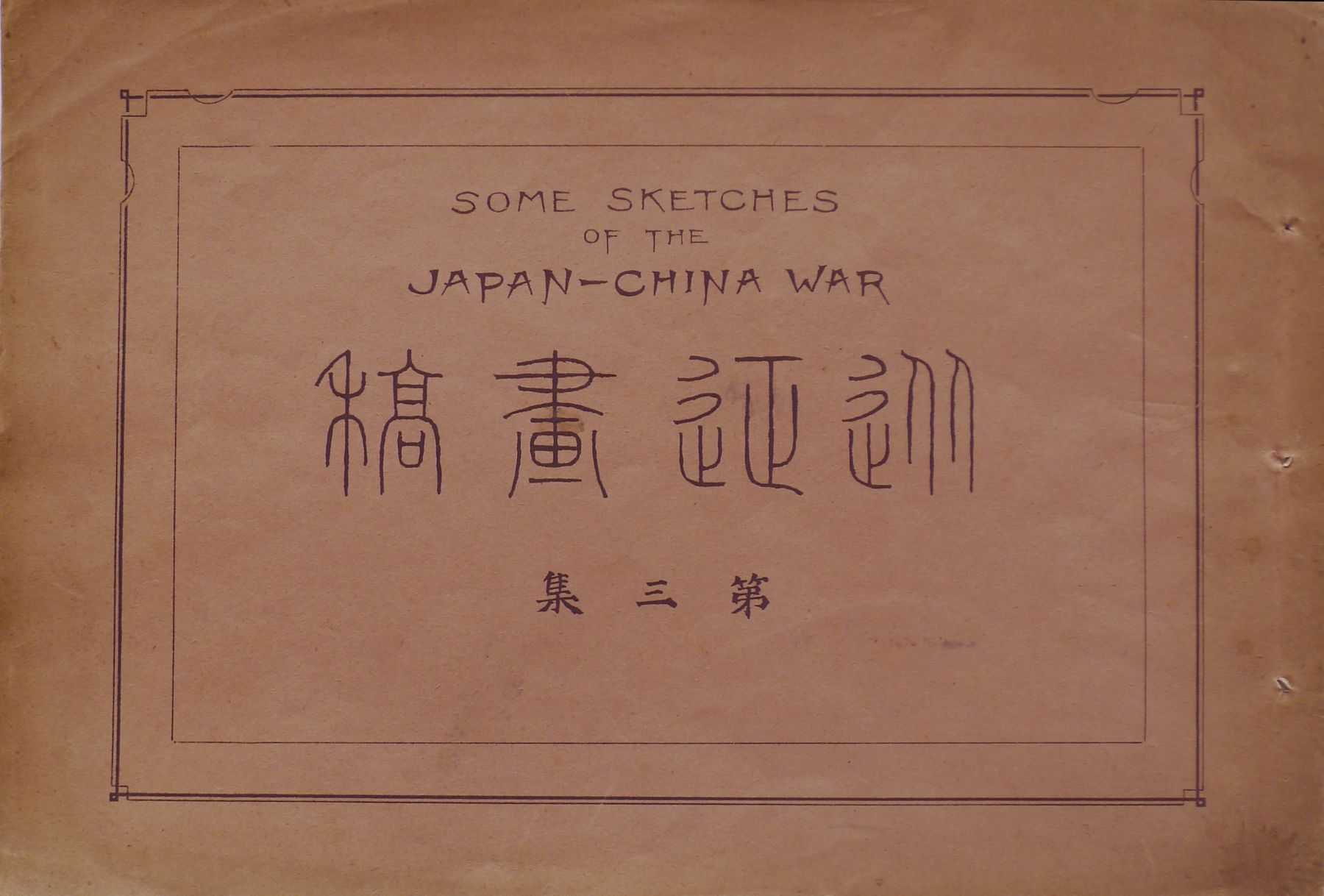
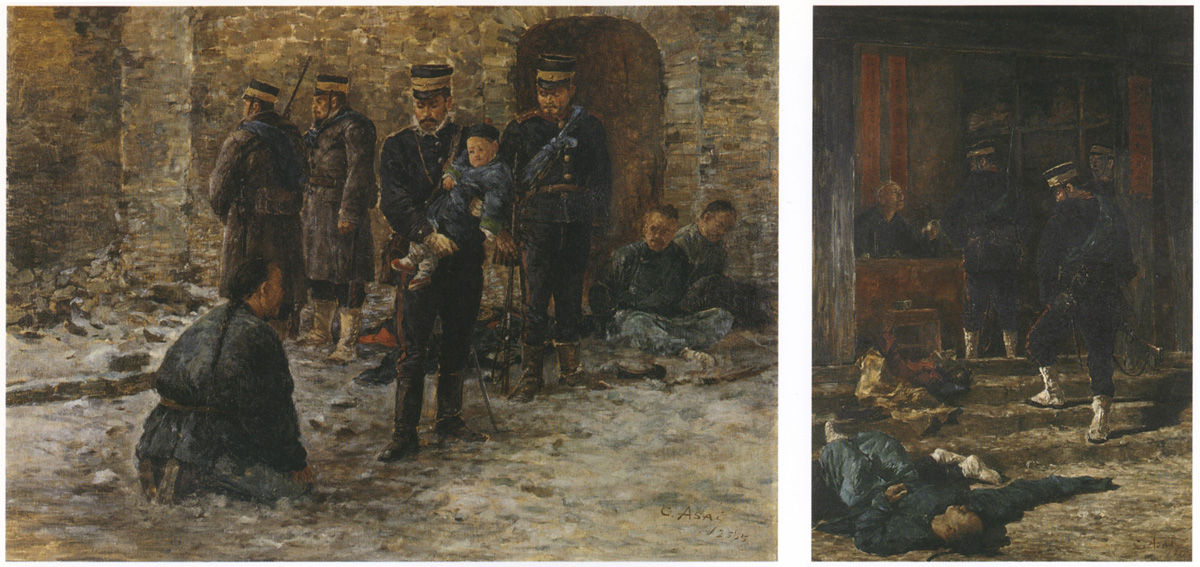
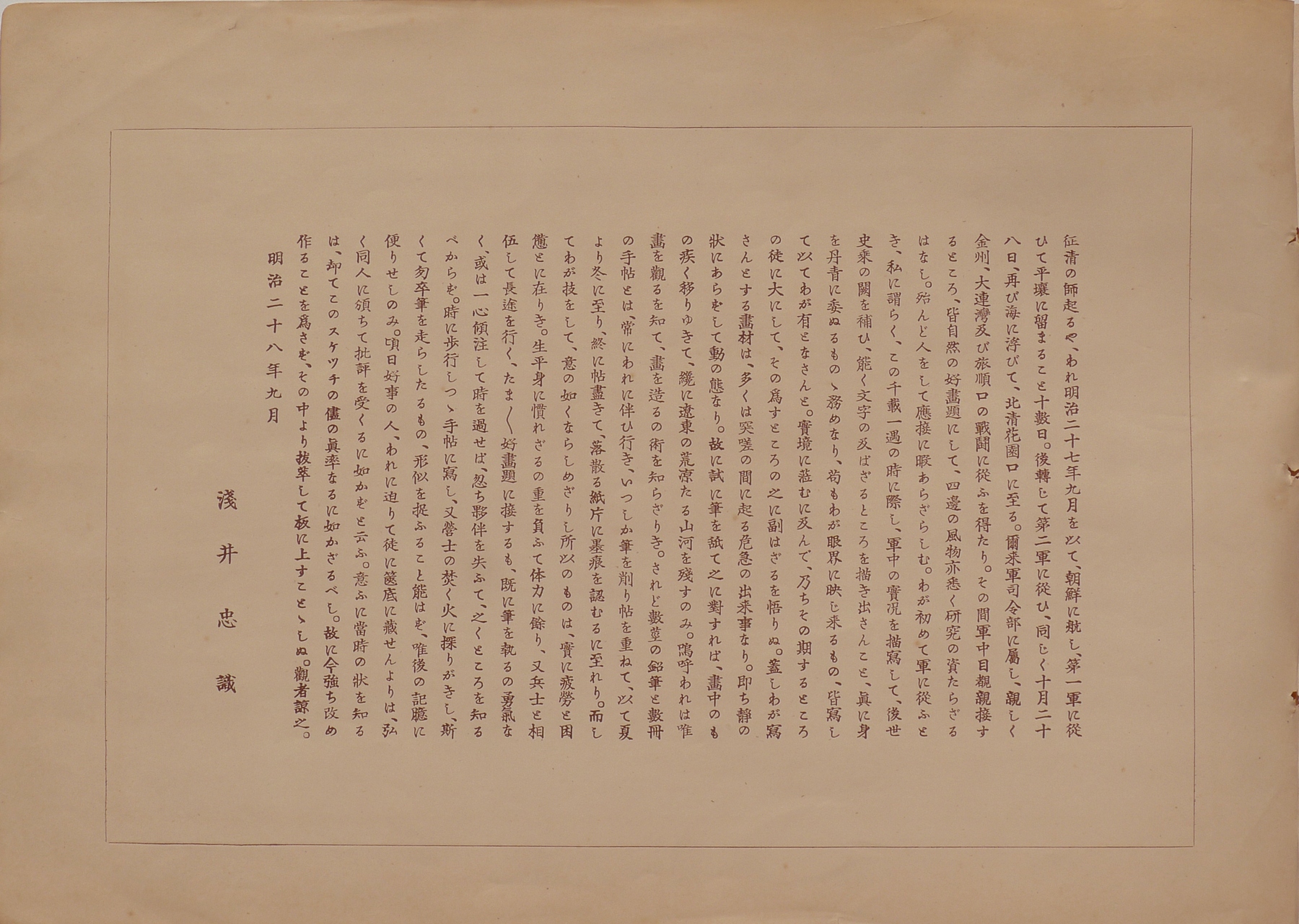
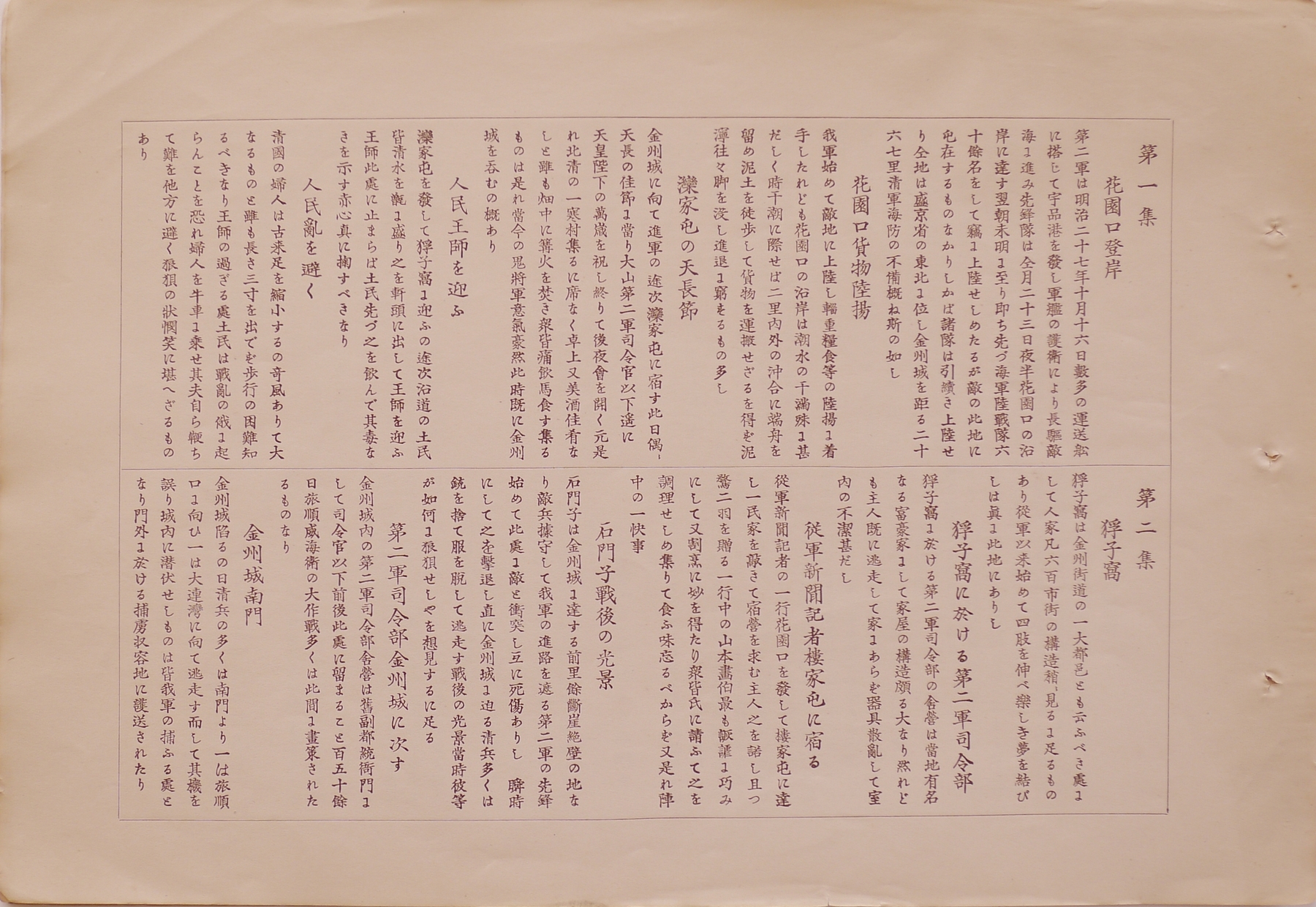
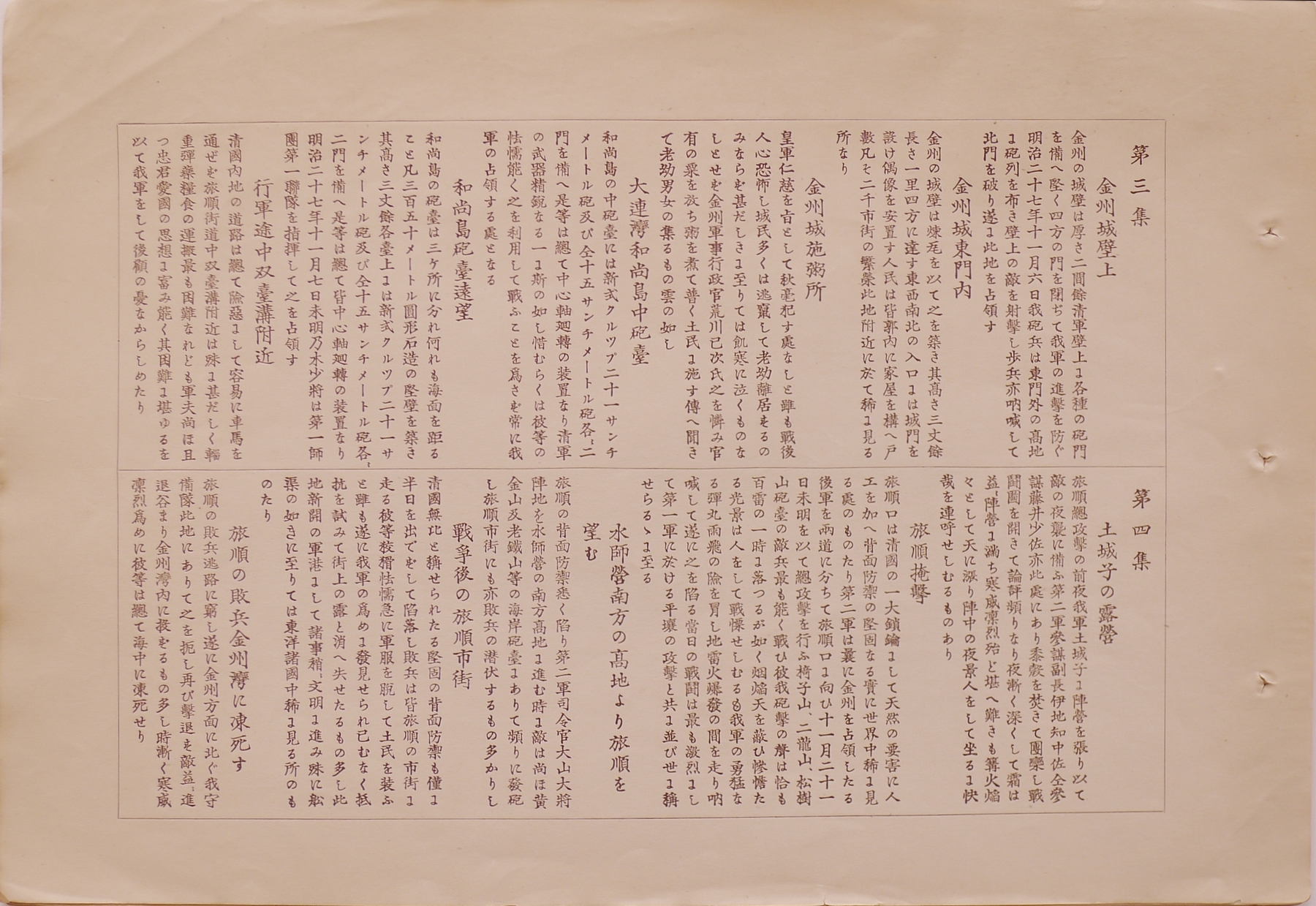
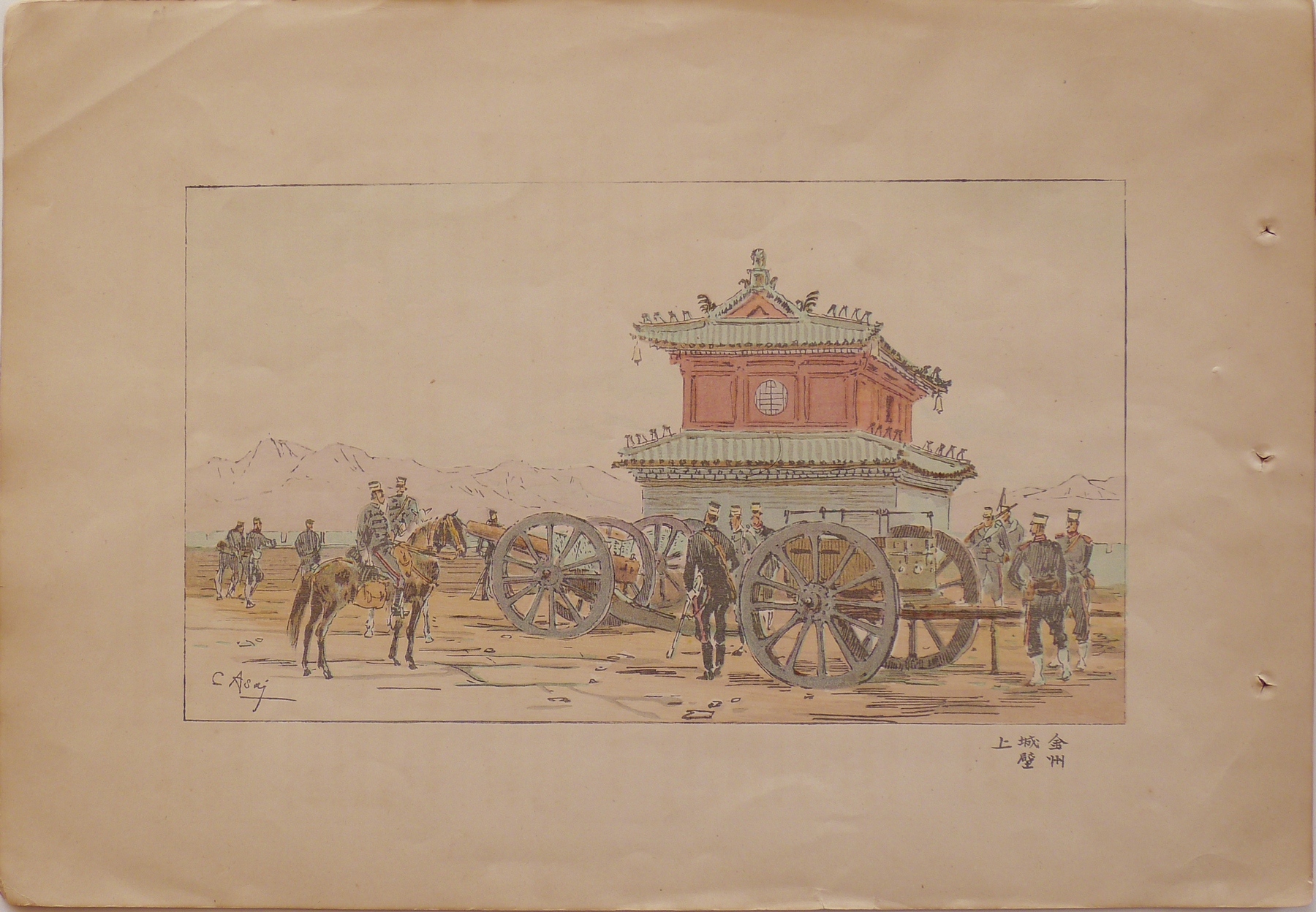

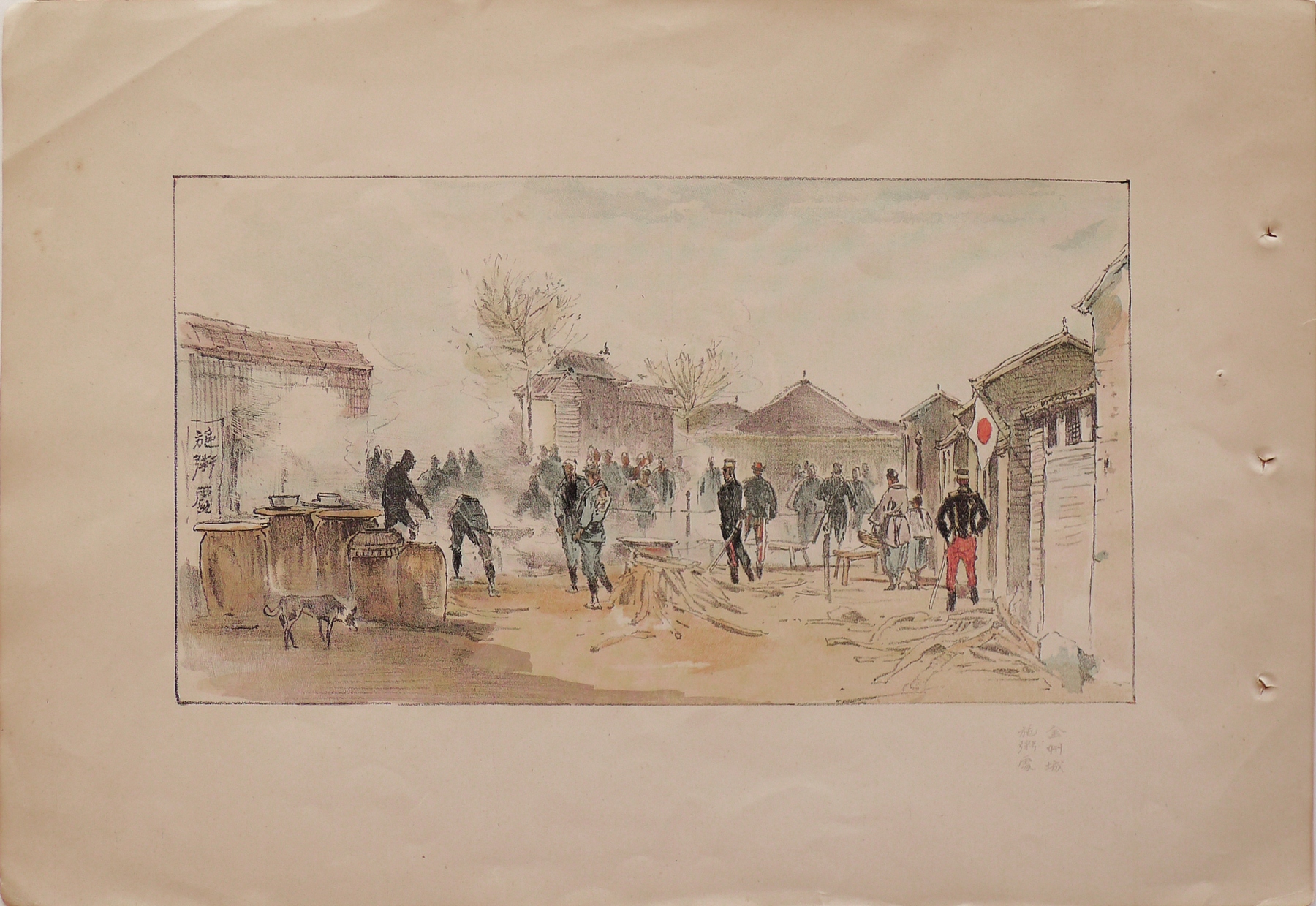
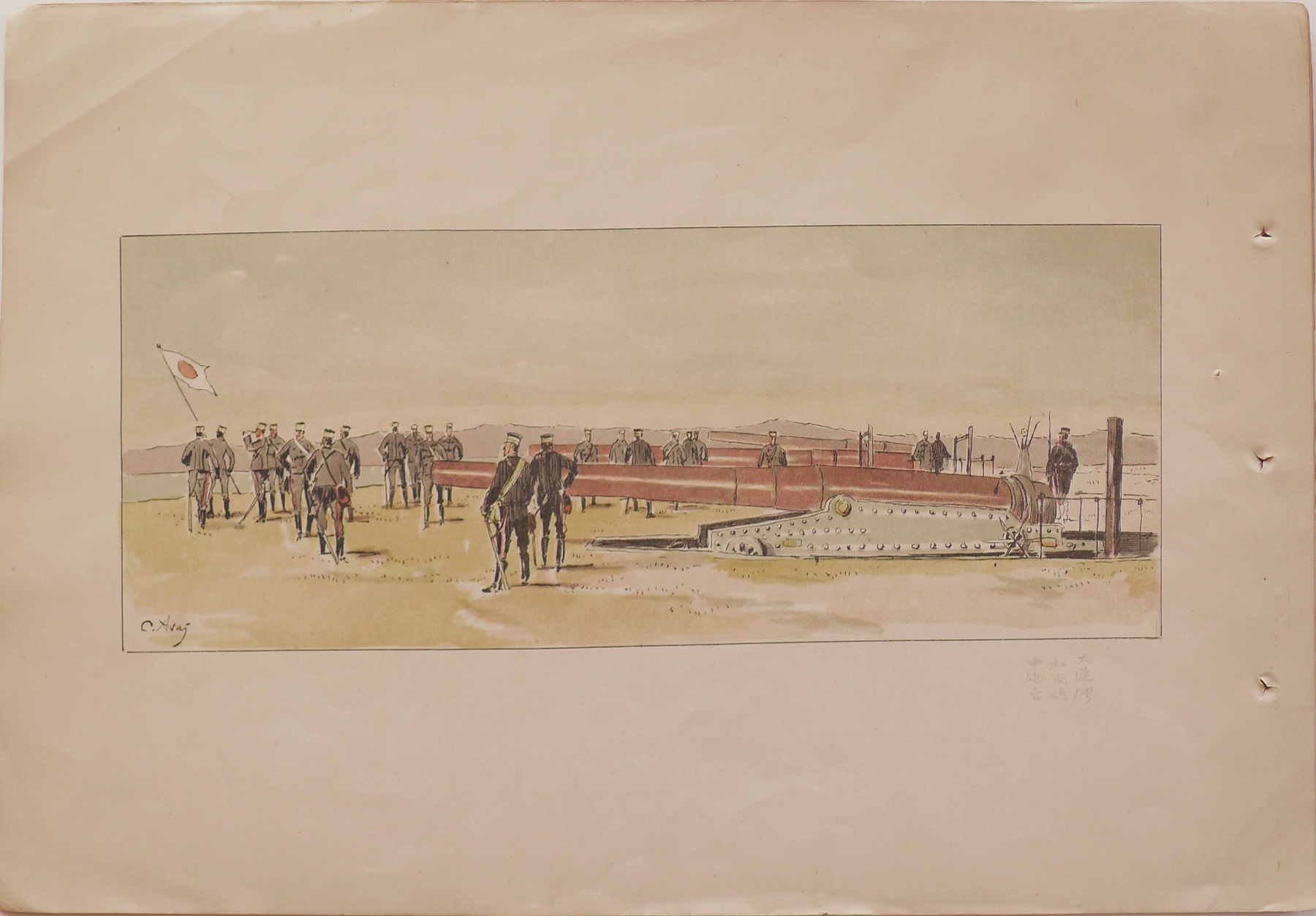
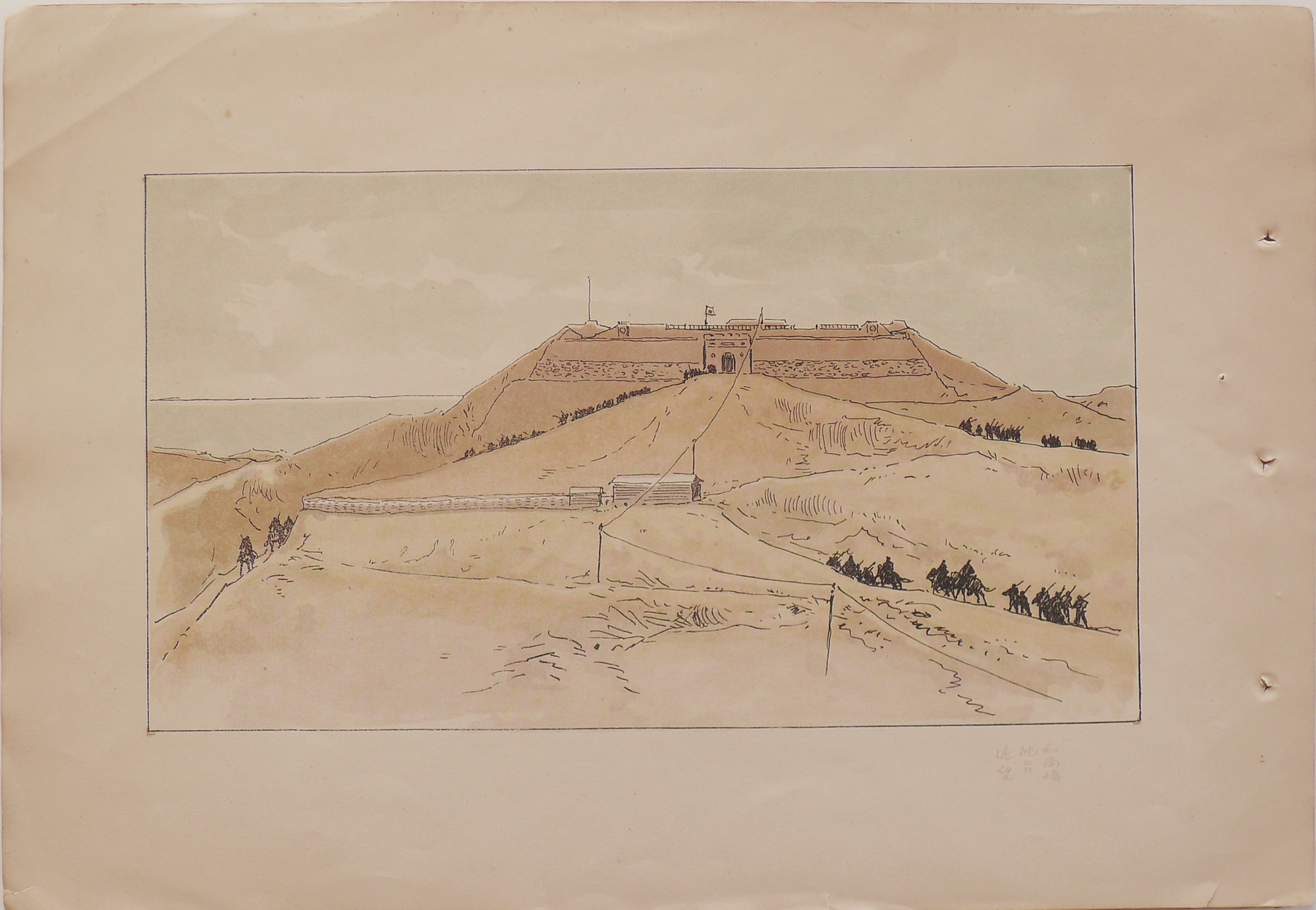

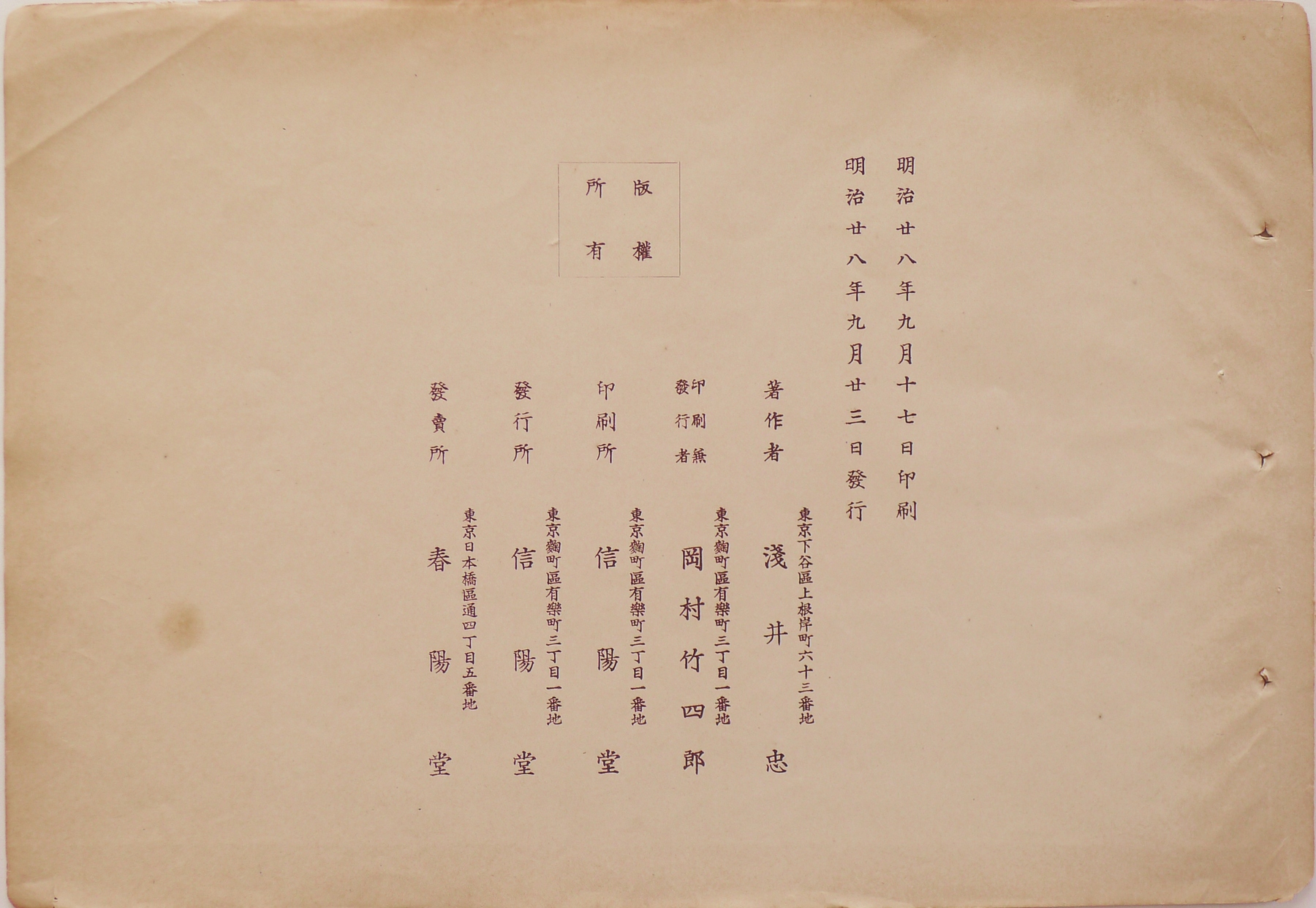
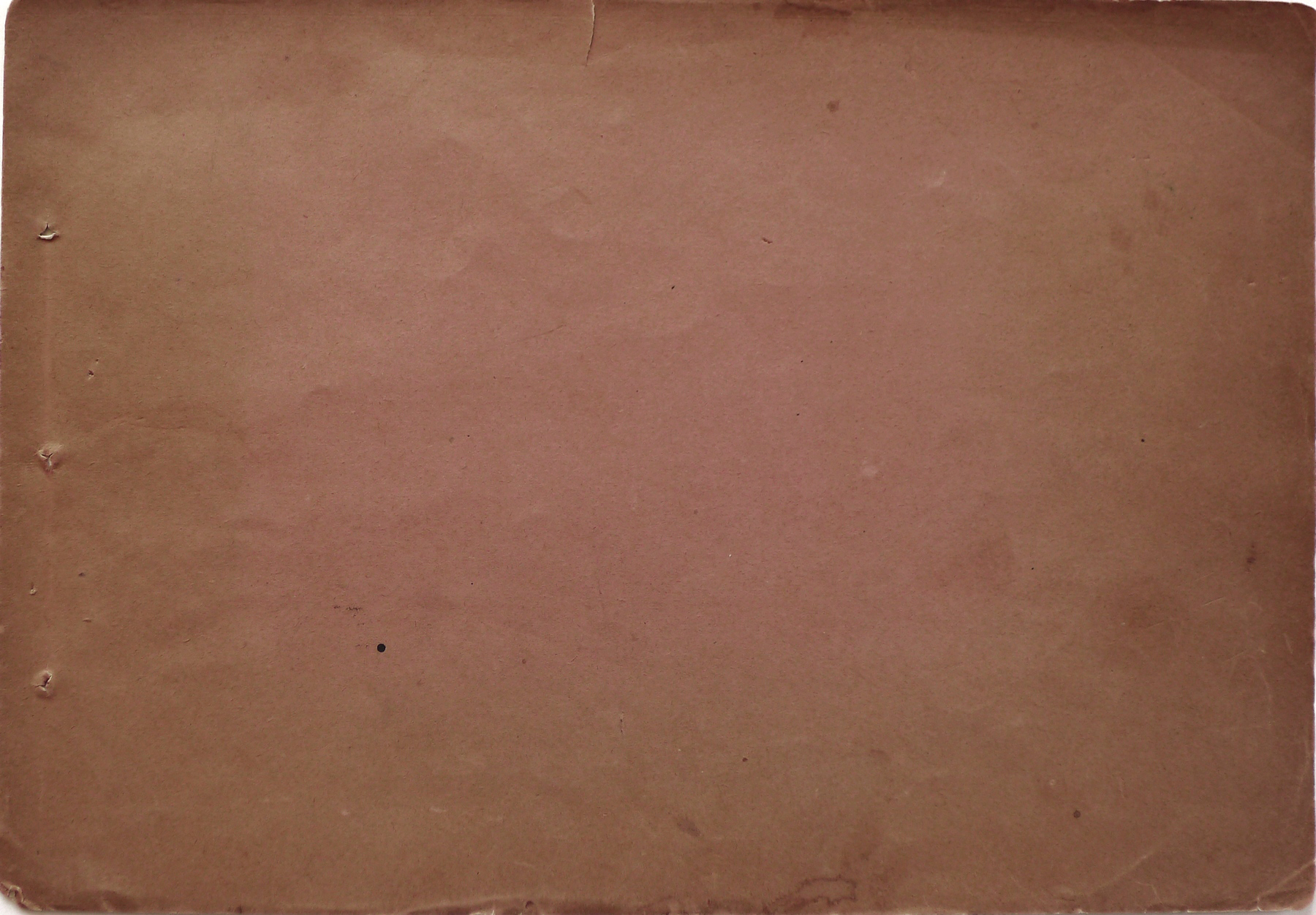
 金州城壁上
金州城壁上